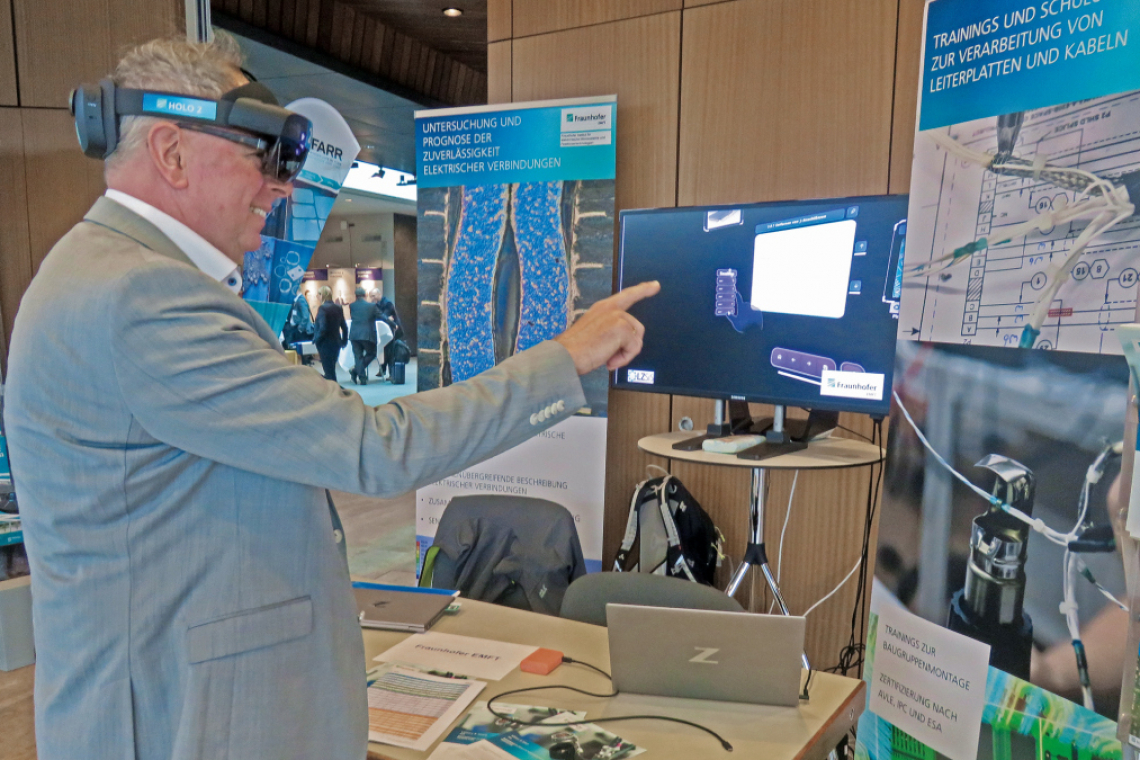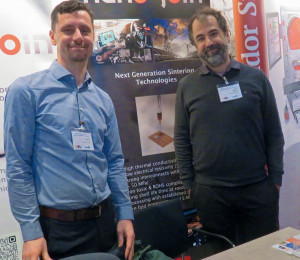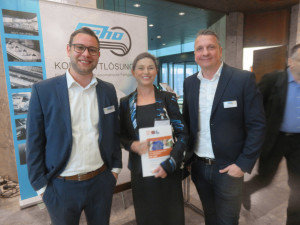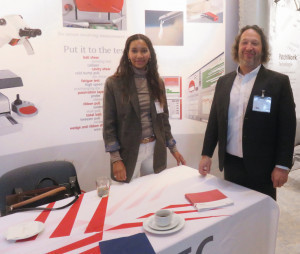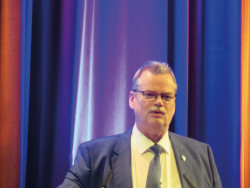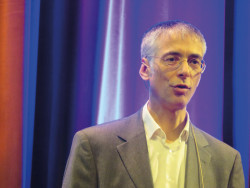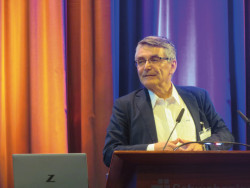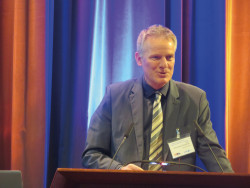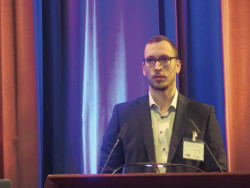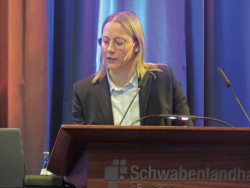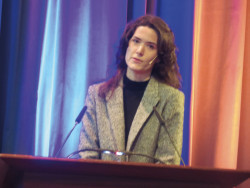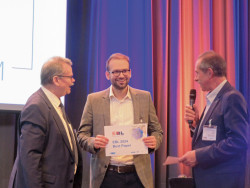With this topic, the organizers of the 12th GMM/DVS Conference on Electronic Assemblies and Printed Circuit Boards 'EBL 2024' have once again hit the mark. After all, there is currently much under discussion in this area and practical solutions are in demand and under development. Artificial intelligence (AI) was also a topic.
Accordingly, the two organizers, the VDE/VDI Society for Microelectronics, Microsystems and Precision Engineering (GMM) and the DVS, the German Welding Society, welcomed numerous participants to the Schwabenlandhalle in Fellbach. As at previous EBL events, there were plenary lectures and parallel lecture sessions on special topics, with over 50 contributions in total. There was also an awards ceremony, a tabletop exhibition and a get-together.
The EBL 2024 was opened by Bernd Enser, Chairman of the Scientific Program Commission, and Prof. Dr. Mathias Nowottnick, University of Rostock, the Scientific Conference Director.
Bernd Enser introduced the conference topic of sustainability and energy efficiency with smart electronics. He said that AI offers more opportunities than risks and that it is important to use AI safely. After all, sustainability requires energy efficiency over a longer period of time and energy efficiency offers benefits. It depends on the perspective and the right balance of the individual components. It is possible to want one without giving up the other.
With regard to the current economic situation, Prof. Dr. Mathias Nowottnick cited the effects of the weakening automotive industry on the electronics sector as an example. In contrast, the demand for electronics from the medical and military technology sectors remains strong. The environment has an impact on trends and poses new challenges for the electronics industry. These include a shortage of skilled workers, supply chain problems, the right to repair, additive manufacturing, ultra-high frequency applications and all-in-one packaging. The titles of the EBL 2024 lecture sessions reflect this. Prof. Dr. Mathias Nowottnick then thanked the participants, speakers, exhibitors and supporters of the event as well as the programme committee and the organizers.
Keynote session on green electronics, IoT security and AI
Dr. Nils Nissen, Fraunhofer IZM, Berlin, provided information on the status and potential for green electronics in Germany. Environmental and political crises characterize the general situation. Record temperatures were recorded worldwide in 2023 and January 2024. Climate change is to be limited withCO2 neutrality. In addition, there are many other environmental protection requirements, such as the planned PFAS ban and the demand for information on environmentally relevant data. Dr. Nils Nissen said that there are no green, i.e. environmentally neutral, printed circuit boards. In addition, recycling them is a problem and their production costs are high.
In his keynote speech entitled 'From Banknotepaper to IoT - Security-Tech is the key', Dr. Michael Tagscherer, CTO Giesecke & Devrient, described how objects can be protected against counterfeiting and misuse in the digital age, based on the development of security features on banknotes (from watermarks to holograms, etc.). Solutions include pluggable SIM, eSIM and iSIM and the associated embedded operating systems as well as identity management with verification in the physical and digital space.
Prof. Dr. Clemens Cap, Institute of Computer Science, University of Rostock, answered the question: "When is the use of text-generating AI an intelligent decision?" Starting with the basics of how AI works, he gave a list of examples of what AI can do and what is problematic, which can result in nonsensical or incorrect texts. For example, AI was only able to calculate once it had been expanded to include an appropriate tool. What the AI outputs as text depends on what it has previously learned or done, so that the result cannot be reproduced at a later date. This is because AI can easily be confused or manipulated by entering (incorrect) information. Nevertheless, text-generating AI is already in use. However, it should only be used for things that work well, such as searching for text, which can save a lot of time.
Young Talent Award session with four nominated entries and award ceremony
Ben Rachinger, Friedrich-Alexander University, Nuremberg, described how the process parameters for selective wave soldering can be optimized using offline reinforcement learning (RL) on the basis of existing data. In addition to Gerber data of the PCB, component data and initial process parameters are used. RL enables modelling and optimization at the same time and the implementation of the RL pipeline for automatic data preparation and transformation was explained. A graphical user interface allows interaction between the RL model and the process expert for further step-by-step optimization. A validation by means of soldering tests showed that with the RL-recommended parameters, 75% of the resulting solder joints already corresponded to class 3 according to IPC-A-610 at the beginning.
Ulrike Passlack, Institut für Mikroelektronik Stuttgart IMS CHIPS, Stuttgart, provided information on flexible hybrid systems - innovative technologies for the production of ultra-thin polymer-based sensor systems for medical applications. Hybrid systems-in-foil (HySiF) have been developed and manufactured at IMS CHIPS for several years. Here, ultra-thin silicon chips are embedded in polymer film using chip-film patch (CFP) technology and wired with sensors at film level. In the latest generation, the silicon chips, thinned to 30μm, are bonded face-down with nanowires to a pre-processed 16μm thick polymer film. This eliminates topographical challenges and the subsequent opening of the electrical connections. The new process was described. The advantages of combining CFP technology with the innovative NanoWiring, KlettWelding and KlettSintering processes are that higher wiring densities and smaller pad sizes can be realized.
Methodical considerations for the characterization and verification of a viscoelastic model for underfill materials were presented by Lisa Christin Stencel, Siemens AG T ICE ELM-DE, Berlin. The procedure for viscoelastic characterization was explained using the example of an underfiller. The basis is the determination of the glass transition temperature TG using DMA. The sample preparation for the DMTA measurement method and this including the approximation by a Prony series as well as the verification in Simcenter Nastran were described. The three models of purely linear elastic material behaviour, relaxation behaviour of the shear modulus with a constant Poisson's ratio over time and the complete description of viscoelastic behaviour using temperature- and time-dependent relaxation moduli for shear and compression were compared with each other using temperature cycles, thus illustrating the advantage of a complete characterization.
Tobias Heise, University of Rostock, provided information on the production and integration of sensory elements for temperature measurement in the printed circuit board. The aim is to integrate temperature measurement into the multilayer structure. This would also enable thermal monitoring during operation of the assembly. Thermocouples were used as sensors. Their measurement tolerances are sometimes ±1K in a range similar to that of commercial thermocouples. The requirements for the temperature sensor (temperatures from -40°C to 250°C) and the realization of the multilayer structure with two variants for contacting the constantan foil on a core as well as the results of the temperature measurements and analyses obtained were explained. Both assembly variants withstand at least six soldering processes and 1500 temperature cycles between -40°C and +125°C. The advantages of the laser setup are that the contact point and the thermocouple can be manufactured extremely precisely and reproducibly and that large parts of the manufacturing process correspond to standard PCB technology.
The 'Best Paper EBL 2024' award and the EBL Prize for Young Researchers 2024 were presented directly after the Young Researcher Award session.
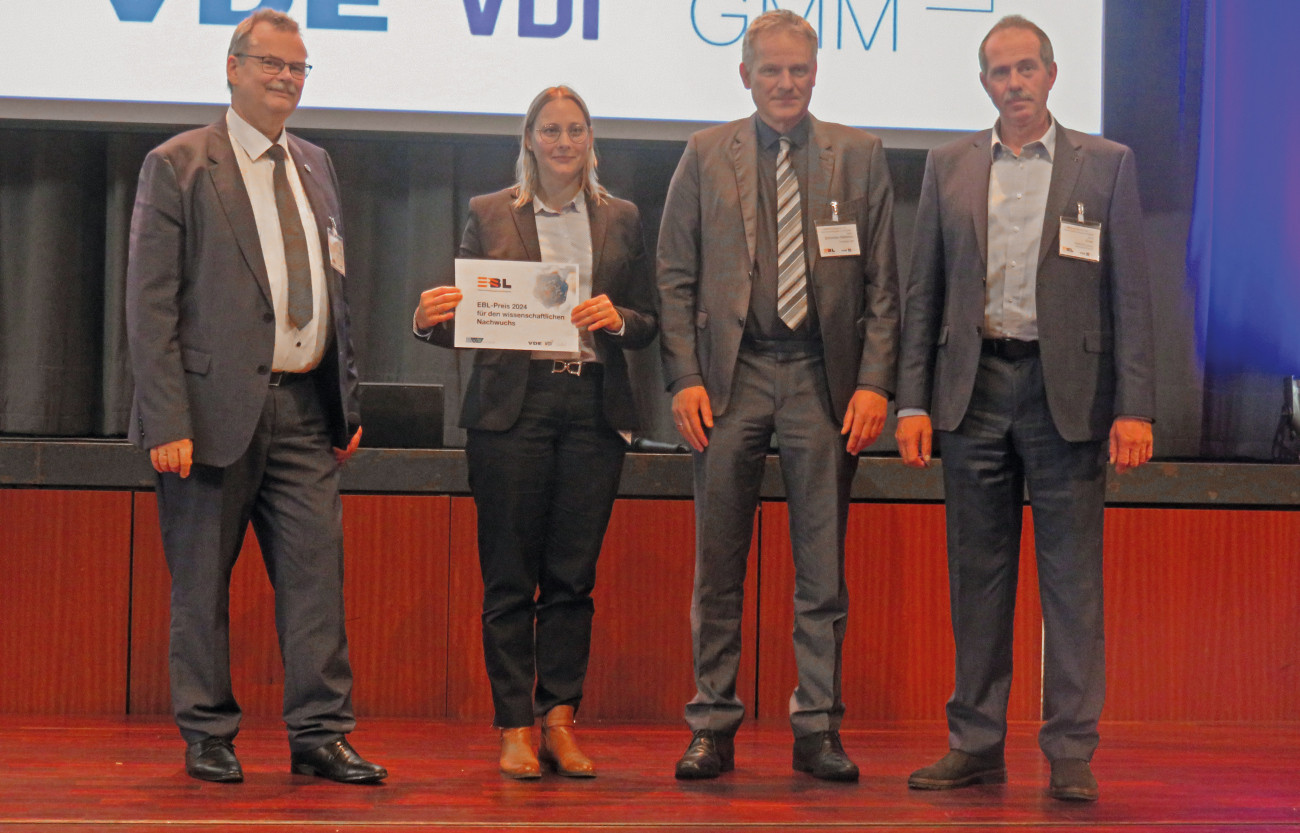 The EBL Prize for Young Researchers 2024 went to Ulrike Passlack for her paper on flexible hybrid systems - innovative technologies for the production of ultra-thin polymer-based sensor systems for medical applications
The EBL Prize for Young Researchers 2024 went to Ulrike Passlack for her paper on flexible hybrid systems - innovative technologies for the production of ultra-thin polymer-based sensor systems for medical applications
The other contributions from the other sessions not mentioned here also offered a lot of new information, so it is worth getting to know their content. All contributions can be found in the proceedings of EBL2024, GMM Technical Report 107, which is available from VDE Verlag in various formats (ISBN 978-3-8007-6265-1 as a CD-ROM, ISBN 978-3-8007-6266-8 as an e-book, ISSN 1432-3419).

